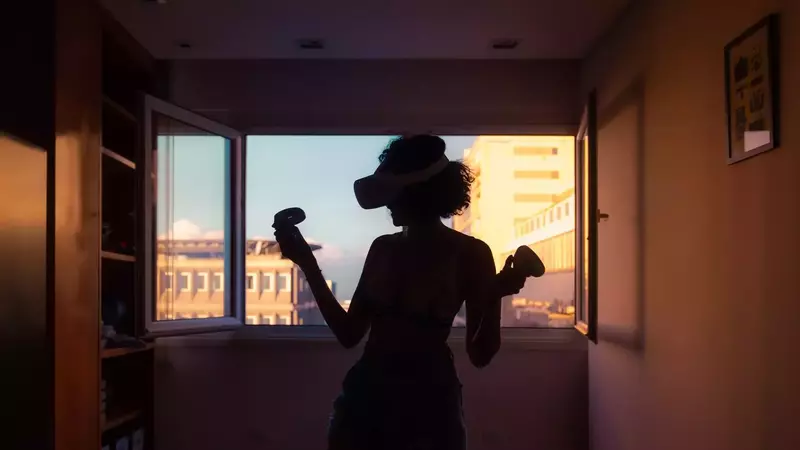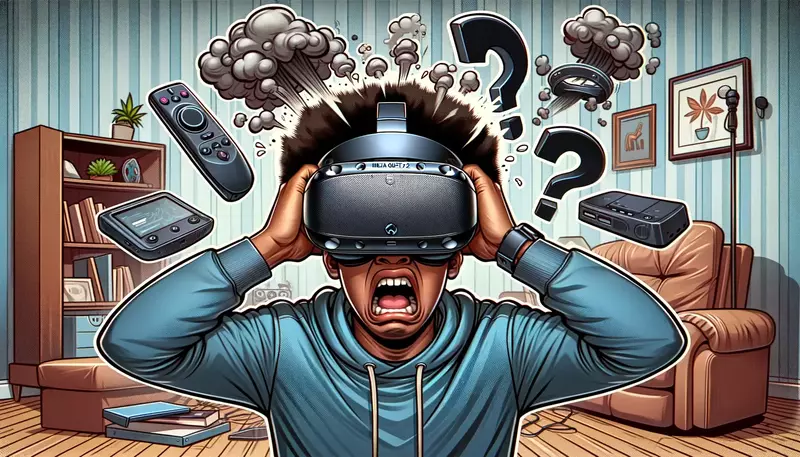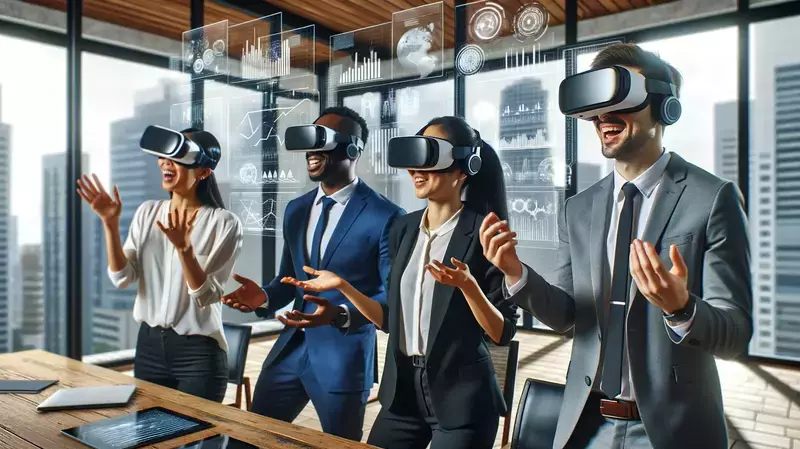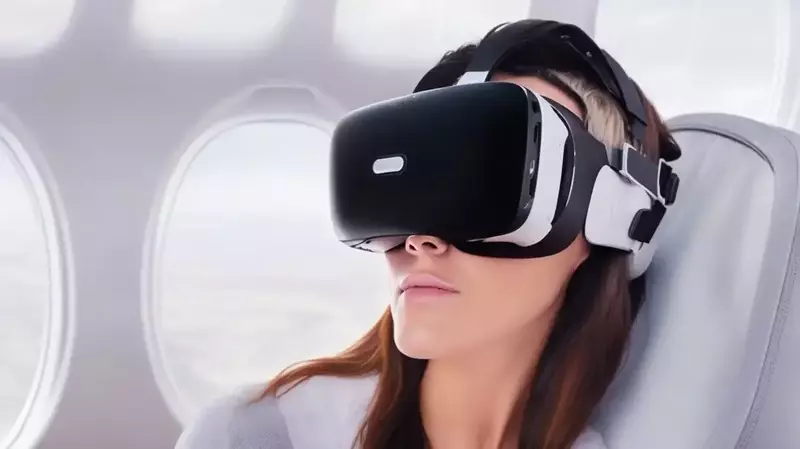This site contains affiliate links to products, and we may receive a commission for purchases made through these links.
If you consider buying the Oculus Quest 2 (Meta) there are multiple features you might want. One of the most anticipated new features is often full-body tracking. So perhaps you are wondering: Can I get full-body tracking with Oculus Quest 2?
No. At present, there is no way to enable full-body tracking on Oculus Quest 2. Why? This headset does not have external peripherals. The tracking method it uses is housed entirely within the headset. However, the headset does have other amazing features such as hand tracking and Bluetooth keyboard and mouse support.
Read on to discover more about what this means for you and your VR experience.

What is Full-body Tracking?
Full-body tracking is a technology that allows VR systems to track the movement of your entire body. This means that when you move your arms, legs, or head in the virtual world, your avatar will mirror those movements exactly.
Until now, full-body tracking has been limited to high-end VR systems like HTC Vive and Oculus Rift. These headsets require the use of external sensors that are placed around the room.
The Oculus Quest, on the other hand, uses built-in cameras and sensors to track your movement.
READ MORE! Will Full-Body VR Like “Sword Art Online” Ever Be Possible?
Why is Full-body Tracking Important?
Full-body tracking is important because it allows you to move freely in the virtual world without worrying about running into walls or furniture. It also makes the VR experience more immersive and realistic.
If you have ever played a game on Oculus Quest, you know that it can be difficult to keep track of your surroundings. This is because the headset only tracks your head and hands.
With full-body tracking, you will be able to see your entire body in the virtual world, making it easier to avoid obstacles.
Why Doesn’t the Oculus Quest 2 Support Full-body Tracking?
As I have mentioned above, full-body tracking would require some form of external sensors, be it cameras or lasers, in order to map your body movements within VR.
This is not possible with the Oculus Quest as it only uses its onboard sensors to track movement. This means that there is no way to enable full-body tracking on Oculus Quest without some external peripherals.
READ MORE! 18 Tips & Tricks For Oculus Quest 2 (You Need To Know!)
Will the Oculus Quest 2 Start Offering Full-body Tracking?
There is word that Oculus is working on a new version of the Quest that will offer full-body tracking. However, there is still no official word from Oculus on when this updated version will be released.
In the meantime, you can check out some of the other great features of Oculus Quest such as hand tracking and a passthrough camera. These features are sure to enhance your VR experience.
Oculus Quest 2 Features
Since this awesome headset cannot offer you full-body tracking, let’s take a look at some of the other great features it does have to offer:
Hand Tracking: This feature allows you to interact with the virtual world using just your hands. No need for controllers. You can point, wave, and even give a thumbs up.
Passthrough Camera: The passthrough camera is a great way to see the real world without taking off your headset. This can be useful if you need to take a break from VR or if you want to see what is happening around you.
Improved Display: The display on the Oculus Quest has been improved from the original. It now offers a higher resolution and a faster refresh rate. This means that you will enjoy a more immersive VR experience.
120Hz Refresh Rate: This is double the refresh rate of the original Oculus Quest. This means that you will enjoy a smoother VR experience with less lag.
Couch, Desk, and Keyboard Tracking: The Oculus Quest can now track your movements if you are sitting on the couch or at a desk. This means that you will be able to play games and use apps without the need for a controller.
Bluetooth Keyboard and Mouse Support: You can now use a Bluetooth keyboard and mouse with your Oculus Quest. This will come in handy if you want to type or browse the web in VR.
Benefits of Full-Body Tracking VR Headsets
Full-body tracking headsets have a variety of benefits which include:
A more immersive VR experience
With a full-body tracking headset, you will be able to see your entire body in the virtual world. This makes the VR experience more immersive and realistic.
Better gameplay
With full-body tracking, you will have a better view of your surroundings. This means that you can avoid obstacles and make better decisions in games.
Easier to keep track of your surroundings
Since you will be able to see your entire body, it will be easier to keep track of your surroundings. This is especially important in games where you need to be aware of your environment.
Greater freedom of movement
With full-body tracking, you will have a greater range of motion. This means that you can explore the virtual world more freely.
Enhanced realism
This is another key benefit of full-body tracking. By being able to see your entire body in VR, the experience will be more realistic and lifelike.
If you’re looking for a truly immersive VR experience, then you’ll want to consider getting a full-body tracking headset. While the Oculus Quest 2 cannot offer this feature, there are other headsets on the market that do.
FAQs
How soon will the Oculus Quest 2 start offering full-body tracking?
Is the Oculus Quest 2 worth it?
Are Oculus Quest 2 headsets expensive?
Final Thoughts
While you cannot get full-body tracking with the Oculus Quest 2 right now, it is still a great headset with a lot to offer.
I hope this article has been helpful in answering your question. Be sure to send me a message if you have any further questions.

Espen
Espen is the Director of PursuitMeta and has written extensively about Virtual Reality and VR Headsets for years. He is a consumer product expert and has personally tested VR Headsets for the last decade.




Leave a Reply